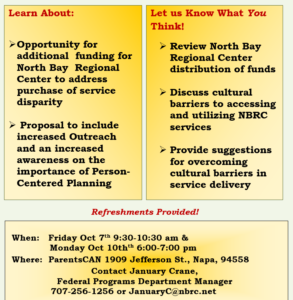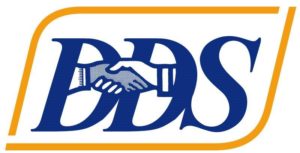Join NBRC for a Town Hall Meeting at ParentsCAN in Napa. We realize cultural and language barriers may impact your ability to access and utilize services- we would like public comment on our proposal for additional funding to address these disparities. Join us October 7th or 10th.






